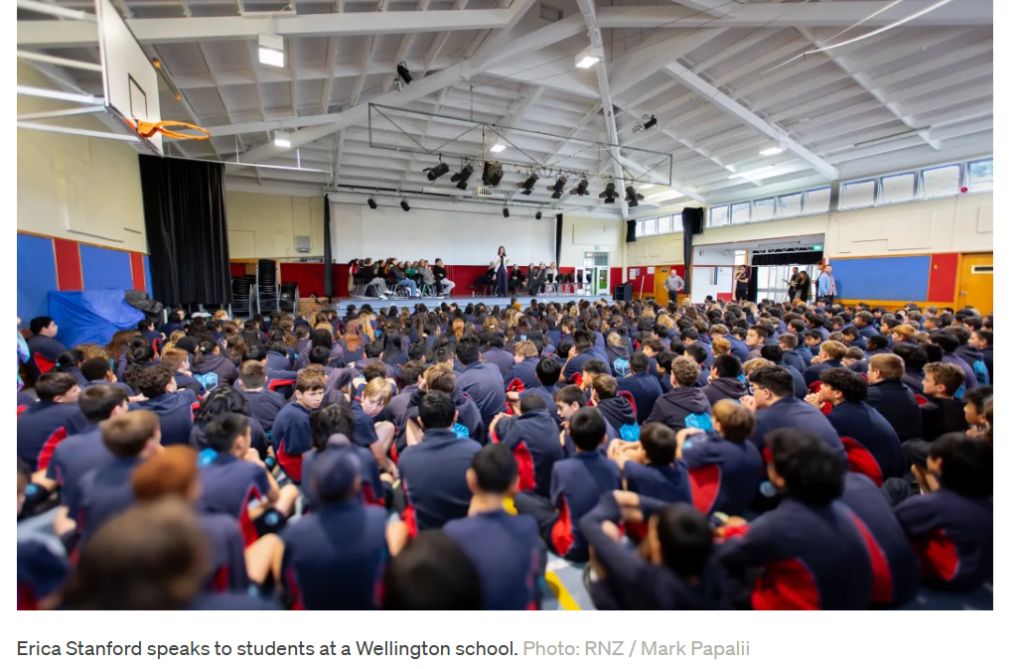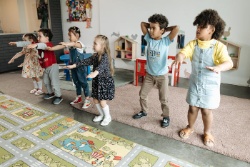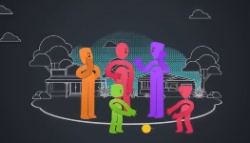Explainer - It's been a year full of changes in the educational system, with announcements and new initiatives coming nearly every week from the coalition government.
What has been announced and what's coming up soon?
Here is a roundup of just some of the major announcements we've seen in 2025 that will affect students and educators:
New curriculum changes kick off
The new maths curriculum and English curriculum for primary school-aged students began this year.
It's all part of the first steps in the government's long-term push for what it's calling a "knowledge-rich" curriculum.
The government also previously announced moves towards teaching structured literacy skills to students.
The drafts of the secondary English and maths curriculums are also out for feedback.
Open plan classrooms on the way out
The government announced it would no longer build open-plan classrooms, moving away from the policy which Education Minister Erica Stanford called too noisy and distracting for children.
While there has been negative feedback from schools on open-plan learning, Stanford said, surveys by the Council for Educational Research showed most teachers who worked in the structures liked them and believed their students benefited from learning in that kind of environment.
New classrooms will be built using standard designs that prioritise flexibility, like glass sliding doors that can open a class when it is time to collaborate and close it for focused learning.

New school attendance service announced
The government is also allocating $140 million to tackle truancy with a new school attendance service.
The funding boost is aimed at supporting more schools and reaching double the number of students over the next four years, according to Associate Education Minister David Seymour.
He said the new attendance service would address chronic absence and focus on keeping students in school when they return.
Transitioning to the new attendance service would start at the end of the year and be fully in place from early 2026.
The return of charter schools
Charter schools have returned to New Zealand this year under the coalition government. They were previously shut down by former Education Minister Chris Hipkins in 2018.
Seven of the publicly-funded, private schools opened in Term 1.
The Charter School Agency said the charter school authorisation board was considering 52 applications from organisations wanting to set up new charter schools next year, as well as two applications from state or state integrated schools wanting to convert.
New school property entity set up
A new school property entity is being set up to manage building, maintaining, and administering the school property portfolio.
Stanford said the new Crown agent will sit separate from the Ministry of Education, which will keep responsibility for education policy and network decisions.
Announcing the launch of the New Zealand School Property Agency, Stanford said schools had been kept waiting for classrooms and refurbishments they badly needed.
A new 600-student primary school was also announced for Massey in Auckland.
Funding for more Māori immersion school classrooms
The government announced $28 million will be spent on building more "safe, warm and dry classrooms" for tamariki in Māori full immersion schools.
Twenty new classrooms will be built across four providers, and work will begin on the first stage of a new school north of Auckland.
The new development, for Te Kura Kaupapa Māori o Ngāringaomatariki in Kaiwaka, will eventually have 19 classrooms.
Kāhui Ako education scheme ends
It was announced in this year's budget that the Kāhui Ako - Communities of Learning - scheme was to be disestablished.
The scheme grouped schools together to work on common problems with extra pay for one principal to oversee each group and for select teachers to share good practice between and within schools.
A report said there were 220 Kāhui Ako, involving 1958 schools and 1506 early learning centres, and more than 4000 teachers received extra pay for Kāhui Ako roles.
Changes to international student work rights
From November, eligible student-visa holders will be able to work more hours a week, from 20 to 25 hours, and work rights will be extended to all tertiary students in approved exchange programmes.
The government will also consider introducing a short-duration work visa of up to six months to allow international graduates who do not qualify for post-study work rights time to seek jobs under the Accredited Employer Work Visa (AEWV) pathway.
It would also look at updates to make it easier for students to apply for multi-year visas.
The goal was to boost tertiary education's annual economic contribution to $7.2 billion, by lifting enrolments from 83,700 in 2024 to 119,000 in 2034.
May's budget sees major changes
There were several big spending announcements in this year's budget. Stanford said new education initiatives in the Budget totalled $2.5 billion over four years, though about $614m of that total was reprioritised from "underperforming" initiatives.
The government's total spend on early childhood and school education would grow by roughly $400m to $19.85b in 2025-26, but drop to $19b and $18.9b in subsequent years.
There was also a $720m increase for learning support.
The increase included $266m to extend the early intervention service from early childhood through to the end of Year 1 of primary school, including employing 560 more early intervention teachers and specialists and helping an additional 4000 children.
It also included $192m over three years to provide learning support coordinators in 1250 more primary schools, $122m to meet increased demand for the Ongoing Resourcing Scheme for students with the highest needs, and $90m to build 25 new satellite classrooms for specialist schools.
Stanford said the government was building up to adding 2 million extra teacher aide hours by 2028.
The other big education initiative in the Budget was $298m for curriculum, nearly half of it targeted to maths and literacy, and about $76m for a new standardised reading, writing and maths test for schools.



 University of Auckland: Are Drug-Resistant Bugs In The Water?
University of Auckland: Are Drug-Resistant Bugs In The Water? Netball New Zealand: Netball New Zealand Board Updates Silver Ferns Eligibility Criteria To Allow Greater Flexibility
Netball New Zealand: Netball New Zealand Board Updates Silver Ferns Eligibility Criteria To Allow Greater Flexibility ECE Parents' Council: Complaints About ECE Services Show Parents Feel Dismissed When Raising Concerns
ECE Parents' Council: Complaints About ECE Services Show Parents Feel Dismissed When Raising Concerns Publishers Association of NZ: Aotearoa New Zealand Book Industry Awards 2025 Winners’ Announcement
Publishers Association of NZ: Aotearoa New Zealand Book Industry Awards 2025 Winners’ Announcement Tūhura Otago Museum: South Island Levels Up With Toi Māori-Inspired Arcade Art At Tūhura
Tūhura Otago Museum: South Island Levels Up With Toi Māori-Inspired Arcade Art At Tūhura NZSTA: Campaign Launched To Boost School Board Participation
NZSTA: Campaign Launched To Boost School Board Participation